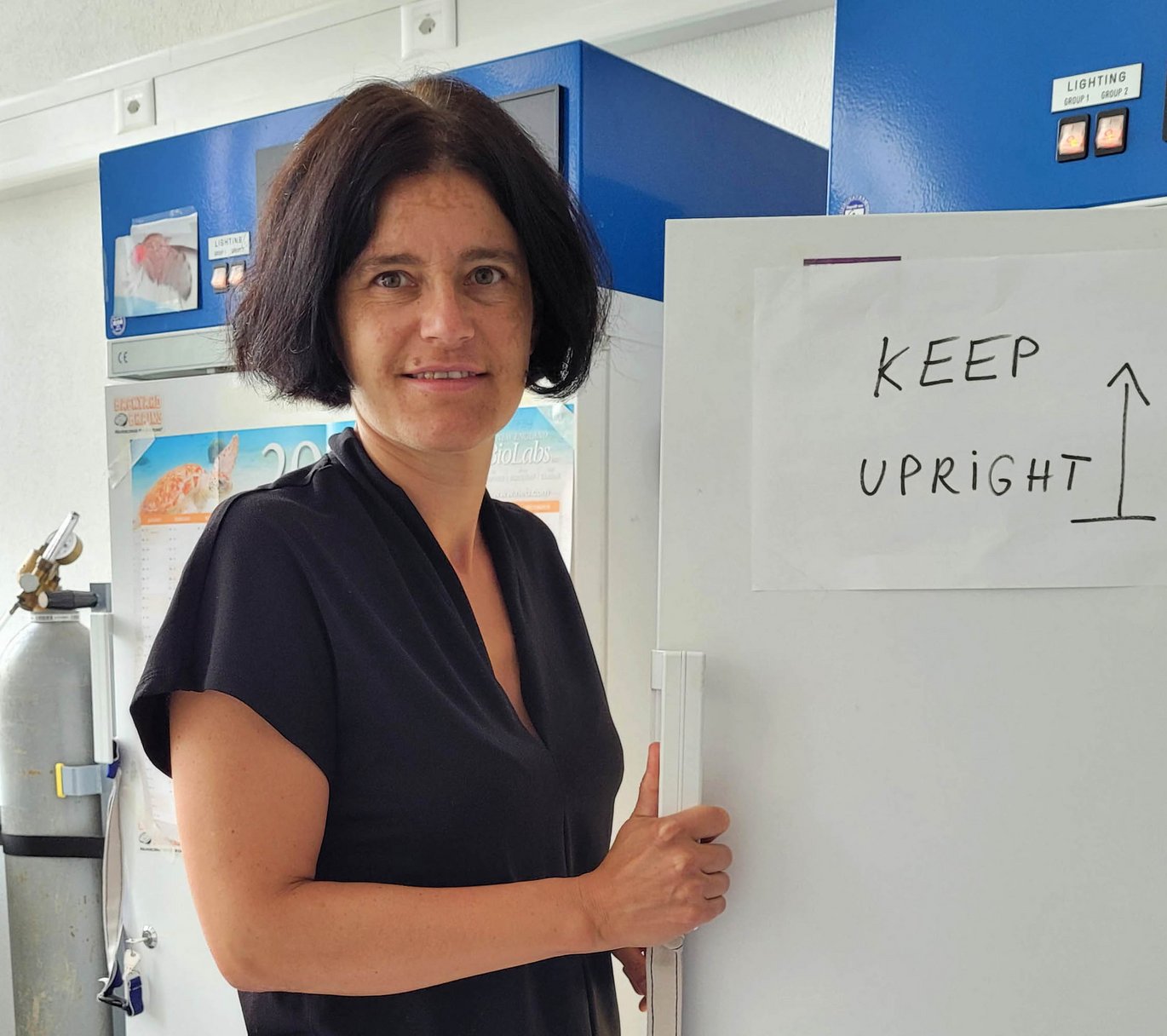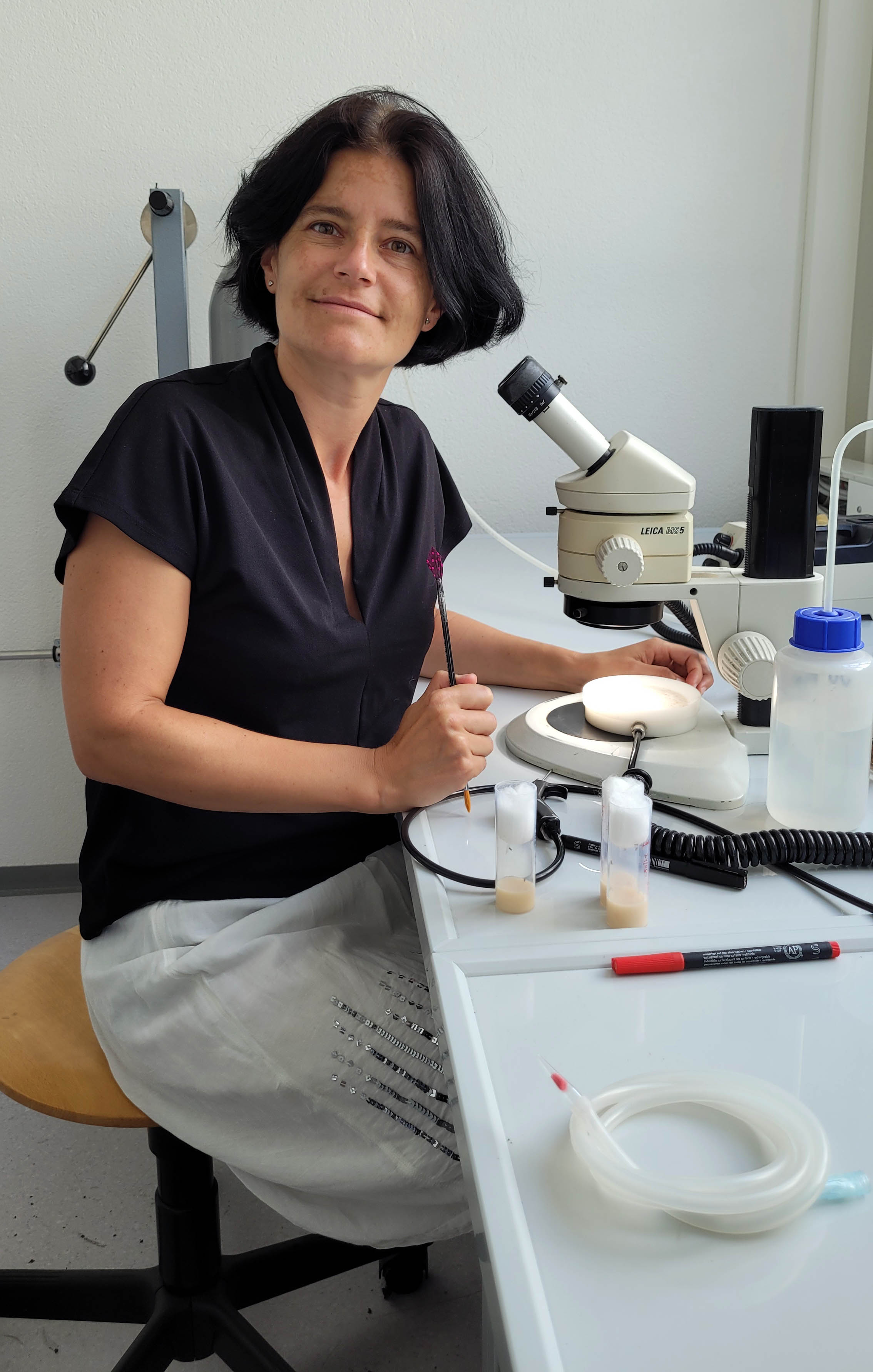Where are they now? Meet Anne von Philipsborn: From Denmark to Switzerland with curiosity-driven academic research
Where are they now? Meet DANDRITE alumna Anne von Philipsborn and learn about her academic research career from neuronal circuits to reproductive biology


Anne von Philipsborn joined the Danish Research Institute of Translational Neuroscience (DANDRITE) at Aarhus University in 2014 as an Associate Professor and Group Leader. There she built a successful neuroscience research program examining the cellular and molecular control of neuronal circuits and behavior. In early 2022, she relocated to Switzerland for a Professorship at the University of Fribourg where she leads a neuroscience and neurobiology research team and teaches medical and biomedical research students.
I recently caught up with Prof. von Philipsborn and learned about her career in academia so far and her future outlook.
How did you get into studying communication and behavior in neurobiology?
Right from the beginning of my studies in biology, I was interested in neuroscience. The essence of the nervous system seemed, to me, to be its connectivity. I was curious how this connectivity could be established during development. I studied axon guidance during my PhD, in a vertebrate system. At conferences, I was fascinated about Drosophila genetics and the ease with which the fly nervous system could be manipulated. After working on development, adult function, i.e. behavior, was a very tempting field. This is how I chose my postdoc in Drosophila circuit neuroscience. And I stayed within this research area ever since.
How did you come to DANDRITE for your first independent group leader position? What was the deciding factor?
By coincidence, I saw an advertizement for the EMBL-style group leader position at DANDRITE. Since I was to be one of the two first group leaders hired in the new institute, accepting the position was a bit of a leap of faith. It was hard to know how DANDRITE would develop over the years and if it would be as successful as the other Nordic EMBL Partnership nodes that were established earlier. But my impression was positive, and it is hard to find a well-funded independent group leader position, so the offer was too good to refuse.
What did you enjoy most about your time at DANDRITE and how did that time help to shape your career step to a professorship?
Scientific independence. I could develop my research in a very autonomous way, without being pressured by more senior people into a particular direction. When I started, there was not much circuit neuroscience research in Aarhus, and Denmark did not have many Drosophila researchers. Sometimes I felt a bit isolated, but it also gave me great freedom in choosing my own way. I really had the confidence that my group was self-sufficient in many regards.
There are so many things you have to learn when starting your own lab! And it can feel like you need to learn them all at once. Supervising students is a great responsibility and sometimes challenging, so I am glad that my first PhD students at DANDRITE were successful and have good jobs right now. Although I was not required to teach at DANDRITE, I am glad I had the opportunity to do so on a voluntary basis. I really profit now from that experience.
Tell me about the University of Fribourg and your professorship there.
The University of Fribourg is not particularly big, but has great science and a good, collegial atmosphere. Located in the middle of Switzerland, we are close to Bern, Lausanne, Geneva, Basel and Zurich, all places with neuroscience and/or Drosophila research.
My position includes teaching embryology and histology to medical and biomedical research students. Many of these topics are new to me, but it is very interesting and stimulating to expand my expertise in these directions. Since I have a background in developmental biology and always liked microscopy, I am happy with my teaching duties and enjoy them so far. I get a lot of help from my new colleagues who have established excellent teaching platforms and are catching me up with more medical knowledge.
At the same time, I have resources for basic science research. I can continue all ongoing projects and start some new ones. I hope to achieve a good balance between research and teaching. I knew that moving always required extra effort, patience and adjustment, but I am confident that it is very much worthwhile.
What are your plans for your group there? And, do these plans include ongoing collaborations in Denmark?
It always takes some time to build a strong and synergistic group in a new environment. I immediately filled two positions with talented junior researchers when I arrived here in Fribourg. I also got great technical support and a lot of renovated lab space. Now I’m aiming to secure more funding to grow the group and start more projects.
Regarding collaborations, I plan to expand my previous international collaborations. I’m connecting with the Swiss Drosophila community, and I still collaborate with a mass spectrometry laboratory at Aarhus University. And certainly, I keep in touch with DANDRITE group leaders Duda Kvitsiani and Sadegh Navabi with whom we had or still have shared projects.
What do you anticipate your position in Fribourg will allow you to achieve scientifically?
At the moment, we still have a lot of exciting projects going on that address the neuronal circuits underlying acoustic communication in flies, as well as the sexual dimorphisms in their nervous system.
Recently, I’ve gotten more interested in reproductive biology in general, in brain-body interactions, and aspects of organismal biology outside neuroscience. For example, I am fascinated about the function of seminal fluid, the regulation of its production in males and mechanisms of sperm storage in females. Drosophila is still my very much beloved main model organism, but teaching human physiology also got me thinking about the possibility of starting projects with vertebrate models.
I also believe that teaching is an important part of science and should not be seen as competing with research. Engaged teaching can give a great sense of achievement and inspiration to think beyond one’s own nose. I believe in the Humboldtian idea of higher education as a sustainable model. For me, it is OK to dedicate time and effort to teaching, without which science as a whole cannot be kept alive and progress.
To wrap up, what has been most satisfying about a career in academia?
To do curiosity-driven basic research! To never stop learning new things! I am very glad to be where I am now and feel privileged being able to follow new developments in life sciences, to read the current literature, even if it is not exactly from my field of research, and to understand it.
Brief career summary
Prof. Anne von Philipsborn completed her PhD studying developmental neurobiology and axon guidance at the Technical University Karlsruhe (KIT), in Germany, working with Prof. Martin Bastmeyer at KIT and Prof. Friedrich Bonhoeffer at the Max Planck Institute for Developmental Biology in Tübingen, Germany. During 2008-2014 she was a Postdoctoral Researcher at the Research Institute of Molecular Pathology (IMP) in Vienna, Austria. In 2014 she started her independent scientific career as a Group Leader and Associate Professor DANDRITE at Aarhus University in Denmark where she established successful lines of research in neuroscience, neurobiology and animal behavior. Since February 2022, she has held a Professorship at the University of Fribourg, Switzerland where she leads a research group in neuronal circuits and behavior and teaches medical and biomedical research students.
The “Where Are They Now? Nordic EMBL Partnership Alumni Careers” profiles introduce readers to alumni of the Nordic EMBL Partnership and the careers that they have embarked on.